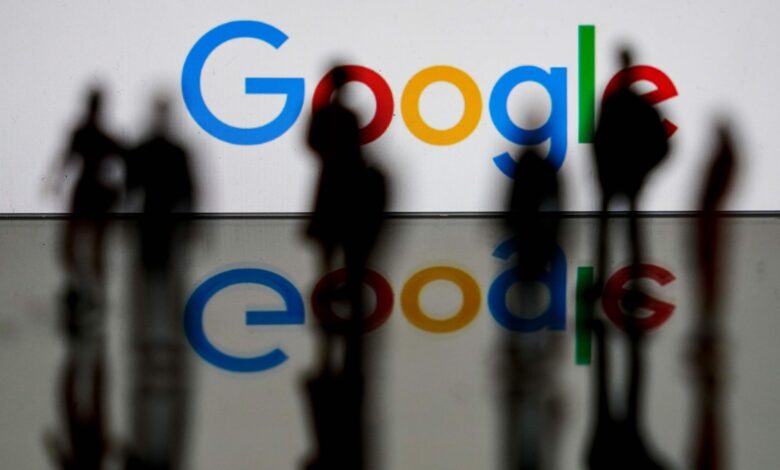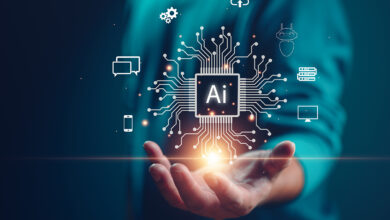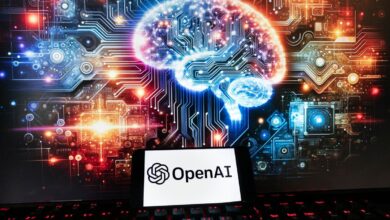Artificial intelligence democratizes work culture

Artificial intelligence (AI) technologies are democratizing business practices and culture, lowering technological barriers, and contributing to making many services more accessible, according to Josh Woodward, the vice president of Google Labs.
In an exclusive interview on the sidelines of the recent Google I/O event, a premier annual developer conference, Woodward elaborated on the transformative power of artificial intelligence and stressed its impact in many industries.
During the event itself in Silicon Valley, the evolving landscape of AI was on full display, showcasing how these technologies are reshaping various industries and democratizing access to advanced tools.
We interviewed Woodward to gain insights into how AI is reshaping the future of work across various professions and industries. The interview centered around advanced AI technologies developed by Google and the competitive environment.
Notably, we utilized AI technologies to formulate some of our questions, including Google’s own Gemini Advanced, and GPT-4o, developed by OpenAI.
Questions by AI
On a question formulated by their rival GPT-4o, Woodward responded with a smile, stating that they develop AI solutions using small teams, which helps them democratize business processes.
“We use small groups when developing solutions for diverse user groups. AI enables us to democratize many work processes, helping us contribute positively to humanity,” he said.
We also posed questions using Gemini Advanced. Interestingly, it failed to recognize Woodward and didn’t generate a question. When we showed him the response, Woodward tested it on his Pixel 8 Pro phone with the same result.
“Okay, we’ll follow up on this. It’s interesting. This is the first time someone has searched my name this way,” he said.
Key to transformation in education
AI technology is also being used as a significant tool for transformation in the field of education. For some time now, Google has been experimenting with NotebookLM, a tool that provides various conveniences for both students and teachers.
Woodward stated that they aim to use AI not only for students but also for teachers.
He stated that AI makes lesson planning easier for teachers and encourages creativity. The technology makes educational processes more transparent and effective for both teachers and students.
“We particularly wanted to make lesson planning easier for teachers. A great example is our multi-model content references. AI is now entering the classroom, surprising us with its capabilities. Teachers are using it creatively for lesson plans and preparation, making every step transparent and turning educators into learners themselves. We focused more on research. Notebook LM helps brainstorm before drafting documents, almost a pre-Google Docs stage,” he said.
Developers in small teams
Woodward also provided information about the working methods and team structure at Google Labs.
He mentioned that research projects typically begin with small teams, which develop projects by creating innovative solutions. These teams consist of engineers, designers, data scientists and user researchers.
“Our research projects typically start with about five people. These are very small teams that iterate on many ideas, and our team is full of developers who rebuild things. We love building stuff. We don’t enjoy talking or being in long meetings, and we don’t like analyzing. Probably about 70%-75% of the team comprises people with backgrounds who can build things,” Woodward noted.
“We bring together different teams, which can include product managers, designers, user researchers and data scientists. So, we can say that these five-person teams include several engineers. Where does it help their creativity? Sometimes where doesn’t it help? We engage very closely with artists, musicians, developers, teachers and students, and that’s how we learn,” he added.
Opportunities for lifelong learning
Woodward also highlighted the opportunities AI provides for lifelong learning, noting that these technologies present great potential for professionals and anyone eager to learn.
AI enables individuals to continuously acquire new skills and engage in personal development.
Woodward expressed optimism about how AI tools can integrate into both professional environments and personal growth journeys.
“We believe that all these new AI products will integrate into the toolsets of professionals or novices eager to learn. Lifelong learning is a fantastic opportunity that AI offers,” he noted.
Opportunities for Turkish mobile game developers
The discussion also covered the successful mobile game developers in Türkiye’s entrepreneurial ecosystem, with Woodward highlighting the opportunities AI offers in marketing.
AI enables the rapid and efficient creation of digital assets in various areas, from video content production to text writing. By leveraging these capabilities, Turkish game developers can achieve global success, according to Woodward.
“When we talk to people producing video content in the film industry, we see the importance of marketing. Writing text, creating visual assets, and over time, creating audio and video assets all become possible tools again. This significantly speeds up the process,” he said.
“A game developer can use these digital assets to create a holistic campaign in various formats. Turkish developers are not just building for Türkiye but for the world.”
Prepare for future technology with mind-reading headphones
People love hearing about technologies that will shape the future. One of Türkiye’s leading telecommunications and technology companies Türk Telekom’s blog highlights these forward-thinking topics with AI-generated visuals and content, a testament to their commitment to showcasing innovation.
The blog posts and visuals on Türk Telekom’s blog are crafted using generative AI technologies. Perhaps this is a message technology writers should take note of. It’s a reminder that the advice we give others should also be applied to ourselves. How can we utilize AI technologies to create more engaging and high-quality writings and videos? Now, let’s dive into the article on the technology of the future:
Get ready for mind-reading headphones
Every year, the tech world sees numerous innovations and discoveries, but some new features stand out more than others.
One of the groundbreaking innovations of 2024 is neural headphones. These headphones are not just about delivering high-quality sound; they can read brain waves and control computers, marking a significant revolution. What does this technology mean, and how might it change our lives?
Diverse applications
Computer control: Neural headphones allow users to control their computers without using their hands. This feature is particularly advantageous for individuals with mobility restrictions.
Gaming and entertainment: In the gaming world, thought-controlled gaming could usher in a new era. Users could direct game characters and environments with their minds.
Health and rehabilitation: By monitoring brain waves, these headphones can integrate with meditation and stress management applications. They can also be used in treating neurological disorders.
Productivity: In the business world, these headphones can increase productivity by enabling hands-free work. Users can manage documents and software with their thoughts.
Future expectations: Although neural headphones are still in their early stages, they hold immense potential. As this technology advances, user experiences can reach much higher levels. Integration with artificial intelligence, in particular, can enhance the learning capabilities of these headphones, offering more personalized and effective use.
Neural headphones exemplify how technology can become more integrated with the human brain. These innovative devices have the potential to revolutionize not only the audio experience but also user interactions. We can expect these kinds of technologies to become more widespread and a part of our lives in 2024 and beyond.
Sensing electrical activities in the brain
Neural headphones can perform various commands by sensing the electrical activities in the brain. Introduced at this year’s edition of CES, the annual high-tech gadget extravaganza, these devices allow users to control their gadgets with their thoughts. While this provides significant convenience for disabled individuals, it also offers a new form of interaction for general users.
These headphones contain sensors that detect brain waves and muscle movements. When users think of specific commands or make certain muscle movements, these sensors capture the signals and convert them into digital commands. For instance, a user could scroll through a webpage or control a game just by thinking. This technology leverages the brain’s natural electrical activities to create a direct connection between users and devices.



